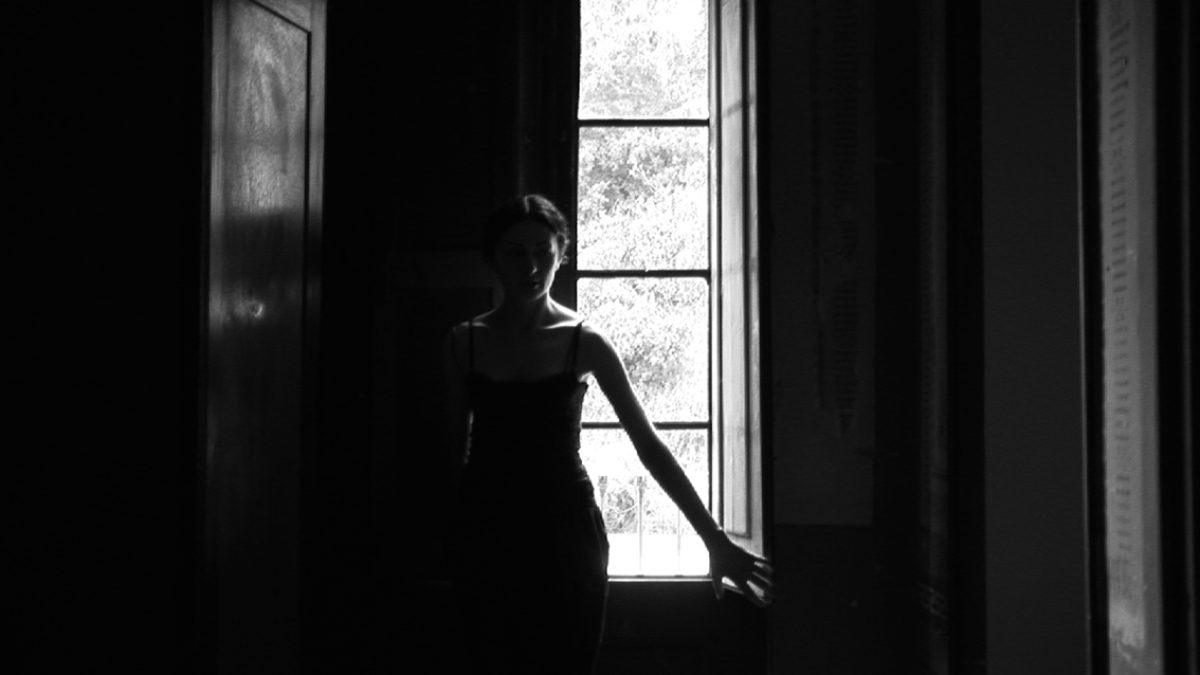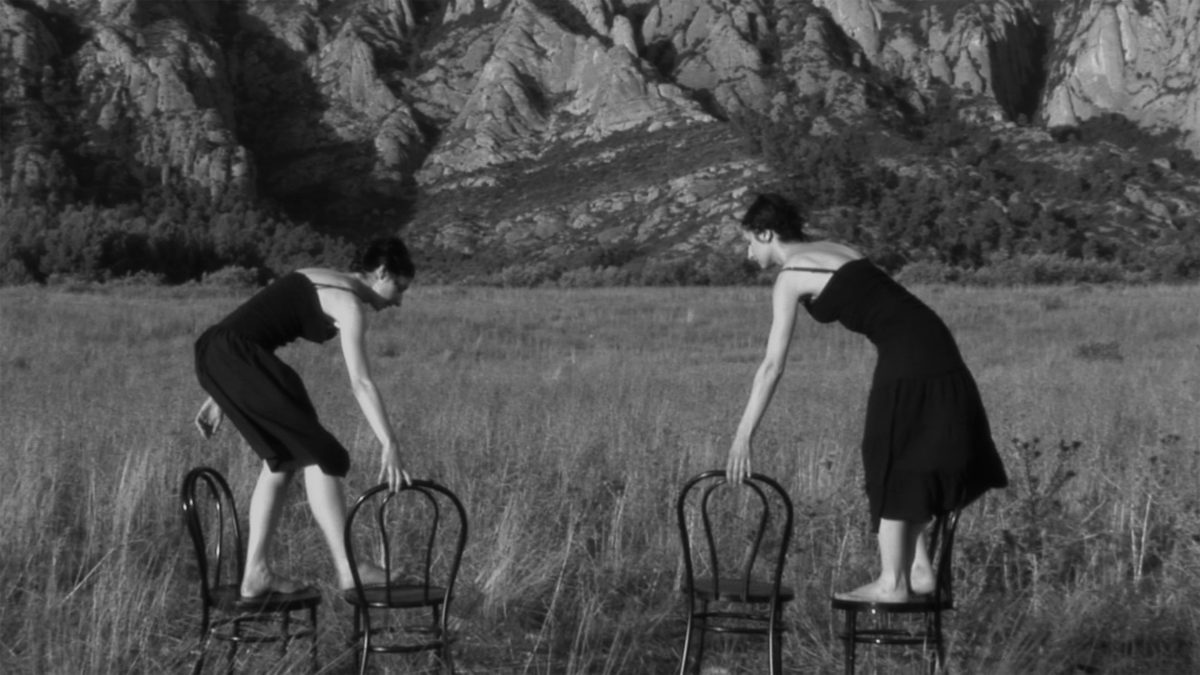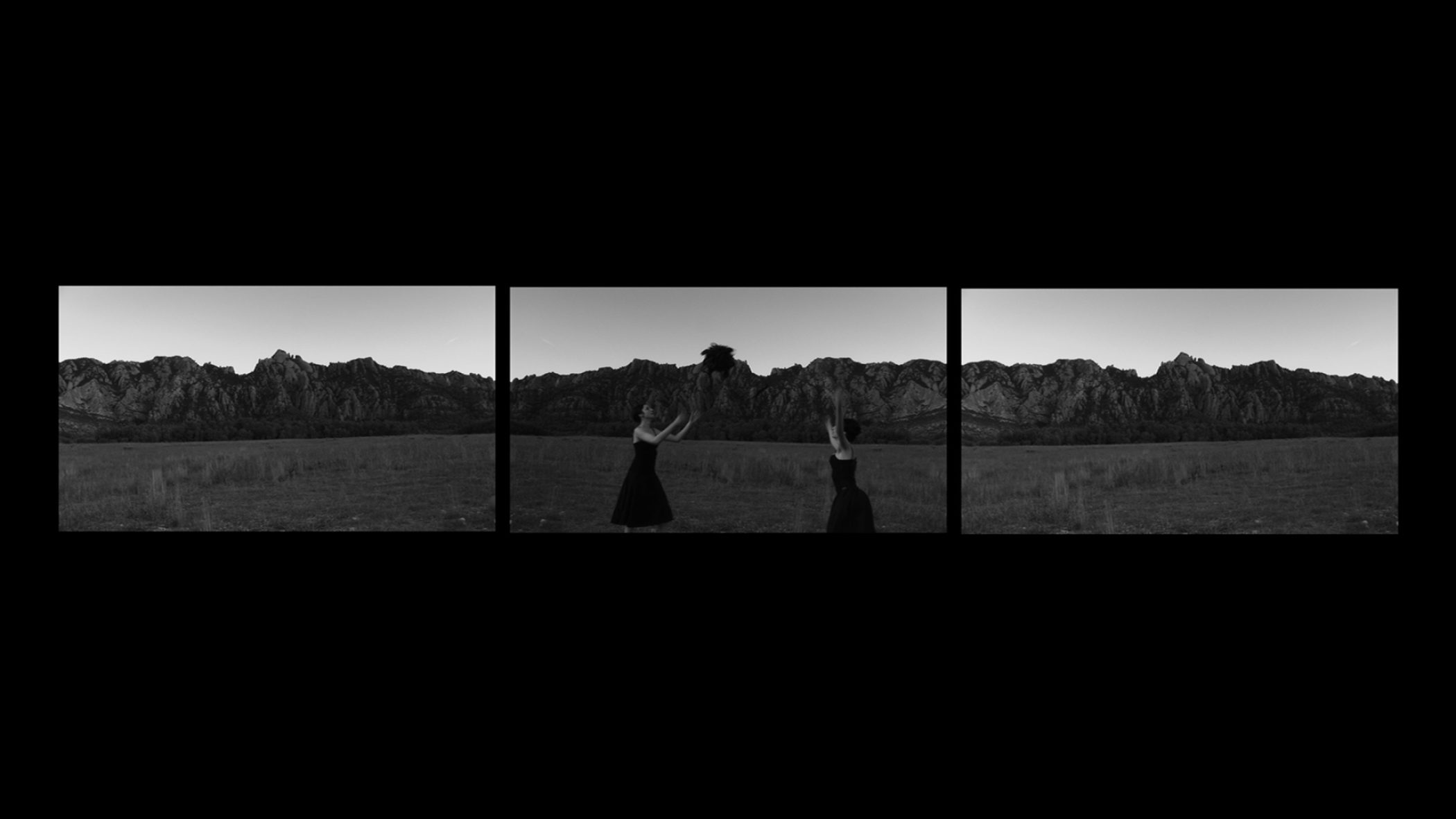Gabriella Mangano & Silvana Mangano
In the Stillness of Shadows
3rd October – 19th December 2009
Anna Schwartz Gallery Carriageworks
The performance and video art of Gabriella Mangano and Silvana Mangano challenges conceptual drawing practice using body gesture to draw in space. They utilise their relationship as identical twins as an aesthetic device, often performing double actions in unison.
Entitled ‘In the stillness of shadows’, their first solo exhibition in Sydney draws together a group of video works conceived and produced in El Bruc, Spain. For these works the landscape becomes studio; actions take place with the Can Serrat Mountains as a dramatic backdrop or film set.
Despite their descriptions as drawings, each of the works presented here utilises techniques specific to the medium of video. For example, footage is slowed, reversed, mirrored, rotated, or the use of the camera’s auto-focus shifts images from blurred to sharp. Video art began with the experimentation of moving images that were not connected to cinema, or a narrative. It is from this point that the artists works begin.
Between Near and Far, a three-channel panorama, sets the scene for this body of work. We observe the expanse of the landscape in which they are situated. The activity, like all of their performances and actions, is simple: the artists throw a cluster of shredded paper to one another as they move across the landscape in front of the mountains. However the slowing and reversal of time changes our perception of this simple activity, making the action appear as if under water, the movements of arms and paper restricted by some invisible force. The doubling of the figure is also confusing; it looks as if our protagonist is throwing the paper to herself. This effect is enhanced as the figures move further away from the camera, or when the footage is actually mirrored.
Reminiscent of Francesca Woodman’s photographic portraits, Endless End is an exercise with background and light. Like Woodman’s photographs “especially those portraits of figures pressed up against bare walls, where clothing becomes wallpaper, or a shard of light cuts through a woman’s arm while at the same time appearing as if it is an object being held”, this work plays with the confusion of background and foreground. As the camera tries to focus on the figure, the background and foreground are merged, however movement is arrested for moments of clarity where the scene is described in great detail.
Time Lapse, a three-channel work, illustrates the protagonists in places that mark their progress to the location in front of the Can Serrat mountainscape. In Time Lapse I and Time Lapse III the protagonist/s are observing “ in nature, as in images associated with the Romantic Sublime.” In Time Lapse II we encounter a sort of dawdling, an activity a child might engage in on the way to school. In these works time is stretched, as the artists attempt to portray the sense of their daily journey with three simple sketches.
The Surround depicts the artists moving slowly in an arid landscape. The scene is timeless: in black and white, the artists wearing simple clothing and using plain chairs, freeing the situation and its landscape from a specific place or era. With this same sense of freedom, the use of chairs as body extensions enables the artists to move through the dry grass without interruption. At the same time their movements are awkward, humourous, absurd.
Tania Doropoulos, 2009
Images

Gabriella Mangano & Silvana Mangano
Between near and far, 2008
8 minutes 25 seconds

Gabriella Mangano & Silvana Mangano
Endless End, 2009
single-channel digital video, 16:9, black & white, sound
8 minutes 52 seconds

Gabriella Mangano & Silvana Mangano
The Surround, 2009
single-channel digital video, 16:9, black & white, sound
2 minutes 5 seconds
Edition of 5

Gabriella Mangano & Silvana Mangano
Time Lapse 1, Time Lapse 2, Time Lapse 3, 2009
three-channel digital video
Time Lapse 1: 1 hour 33 minutes, Time Lapse 2: 2 hours 21 minutes, Time Lapse 3: 1 hour 58 minutes
Edition of 5



